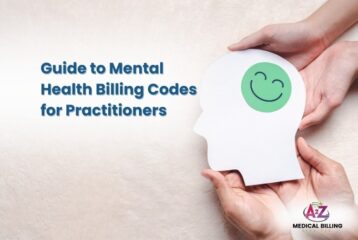Blurry vision is a common complaint. But when it comes to ICD-10 coding, it can feel like a gray area—especially when there’s no clear diagnosis at the time of the visit. That’s where H53.8 (Other Disorders of Vision) comes in.
Whether you’re a physician, eye care provider, or part of a billing team, this guide will help you understand when to use H53.8, how to document it properly, and how to avoid common mistakes that can delay payment.
Let’s walk through it step by step.
H53.8 stands for “Other Disorders of Vision.” It’s essentially a placeholder code used when a patient reports blurry or unclear vision, but:
· There’s no confirmed cause yet, or
· The symptom is not related to a refractive error (like needing glasses)
Consider H53.8 as your “we don’t have a specific diagnosis yet” code—but it still needs to be used carefully and documented well.
If you use the wrong code (like a refractive error when the issue isn’t glasses-related), your claim can get denied or flagged for audit. H53.8 allows you to bill for an evaluation while you’re still investigating the root cause of the blurry vision.
When to Use H53.8
Here’s where H53.8 is totally appropriate to use:
Blurry Vision Without a Diagnosis (Yet)
A patient walks in and says, “My vision’s been blurry lately.” You run some tests, but nothing obvious shows up—yet.
Use H53.8 while you gather more information or wait for labs, imaging, or referrals.
Blurriness Not Due to Glasses or Contacts
If the vision problem isn’t due to needing corrective lenses, you’re outside of the H52.- codes.
Example: Blurriness due to migraines, side effects of meds, fatigue, or even stress.
Temporary or Transient Blurry Vision
The symptom is real—but short-lived and not tied to a specific diagnosis.
For example, “My vision gets blurry when I stand up too fast.”
This could suggest something like orthostatic hypotension, but unless it’s confirmed, use H53.8.
When Not to Use H53.8
H53.8 is a “catch-all” code for vision problems when you don’t yet know the cause. But the moment you identify what’s actually going on, you need to drop H53.8 and code the specific diagnosis instead. Think of H53.8 as a placeholder—it’s useful only when the true condition isn’t clear.
Myopia (nearsightedness)
If the patient’s blurry vision is simply due to nearsightedness, you should use H52.0, not H53.8. Myopia is a well-defined refractive error, so the more specific code is always the better choice.
Hyperopia (farsightedness)
Similarly, if farsightedness is the culprit, the correct code is H52.1. Again, no need for a symptom code when the diagnosis is obvious.
Astigmatism
When the patient’s vision changes come from astigmatism, you’ll want H52.2. This shows that you identified the structural issue with the cornea or lens.
Cataracts
Blurry vision caused by cataracts falls under H25.- (age-related) or H26.- (other types). These are much more specific and give payers a clear clinical picture.
Diabetic retinopathy
If diabetes is the underlying cause of vision changes, code it directly with E11.35 or E11.36, depending on the details. Using H53.8 here would miss the real problem and weaken your claim.
Migraine with aura
When vision disturbances are part of a migraine, the right code is G43.1. This ties the visual symptom directly to the neurological condition.
Conjunctivitis
If the patient has eye redness, discharge, and vision changes due to conjunctivitis, use H10.-. Coding H53.8 in this case would be redundant and inaccurate.
How to Document and Bill H53.8 Accurately
When it comes to coding, good documentation can make or break your claim—especially with symptom codes like H53.8 (Other disorders of vision). Since these codes don’t describe a clear-cut diagnosis, you need to tell the story in your note. The goal is to show why you used the symptom code and what you’re doing about it. Let’s break down how you can document it step by step.
Using the SOAP Note Style
- One of the easiest ways to structure your documentation is with the SOAP format: Subjective, Objective, Assessment, and Plan. This keeps everything clear for reviewers and supports your coding choices.
- Subjective (S): Start with the patient’s own words and their experience. For example, you might write: “Patient reports sudden onset blurry vision in both eyes for the past 3 days. No associated pain or discharge.” This gives context—when it started, what it feels like, and what symptoms are not present.
- Objective (O): Next, record the facts you observe during the exam. This might include: “Visual acuity: 20/40 OU. Pupils equal and reactive. No redness or swelling. Fundoscopic exam unremarkable.” These details prove you looked for obvious causes and didn’t find them.
- Assessment (A): Here’s where you connect the dots. A typical entry could be: “H53.8 – Other disorder of vision. No refractive error identified at this visit. Possible dry eye or migraine-related, further evaluation planned.” Notice that you’re not jumping to conclusions—you’re documenting the uncertainty while still coding accurately.
- Plan (P): Finally, outline what happens next. For example: “Artificial tears started. Refer to ophthalmology. Follow-up in 1 week.” This shows you’re addressing the problem and taking steps for further evaluation, which strengthens your documentation.
Billing Scenarios with H53.8
Now let’s talk about how this code actually shows up in billing. H53.8 rarely stands alone—you often pair it with another code that explains the bigger picture. Here are some real-world examples explained in plain language:
- Blurry vision linked to medication use: Say your patient just started a new diabetes medication and suddenly reports vision changes. In that case, you’d use Z79.899 (long-term drug therapy) as the primary code, with H53.8 as the secondary. This shows the payer that the vision problem may be tied to ongoing medication.
- Vision changes after a head injury: If someone had a mild head trauma and later complains of blurry vision, you’d code S06.9 (unspecified head injury) first, and then add H53.8 for the visual symptom. This way, you’re linking the vision issue back to the trauma event.
- Blurry vision with no obvious cause yet: Sometimes patients walk in with vision changes and you don’t know the root cause yet. In this scenario, it’s perfectly fine to use H53.8 alone. It captures the patient’s symptom without forcing you to assign an unconfirmed diagnosis.
- Dry eye suspected but vision affected: If the patient has signs of dry eye—coded as H04.12 (keratoconjunctivitis sicca)—but they’re also complaining about vision changes, you can pair H53.8 as a secondary code. This signals to payers that you’re coding both the condition and its related symptom.
Common Pitfalls & How to Avoid Them

Overuse of H53.8
Using H53.8 too often (especially as a standalone diagnosis) may trigger payer scrutiny or prepayment review.
Solution: Review patient history closely. If a specific condition can be documented — even provisionally — code it.
Lack of Symptom Duration
Payers want to know: Is this new, acute, or chronic? Lack of timing reduces clinical clarity.
Solution: Always include onset and duration in the note. For example, “blurry vision x 2 days” or “intermittent for 3 months.”
Failure to Follow Up
If blurry vision is a presenting symptom, your subsequent notes must reflect follow-up evaluation and diagnostic work-up.
Solution: Close the loop. Even if the cause isn’t found, document the evaluation path (labs, imaging, referrals).
Tips for Practices & Billing Teams
- Regularly audit how often codes like H53.8 are used. Identify outliers or providers who may be using it too broadly.
- Develop internal guidelines on when to use H52 (refractive), H53 (vision symptoms), and H54 (visual impairment codes).
- While H53.8 doesn’t allow for laterality itself, always document and code laterality when using other ocular codes.
- Some Medicaid and managed care payers may deny claims with H53.8 if it’s the only code. Others require it to be a secondary diagnosis.
- Many blurry vision cases eventually relate to neurological, metabolic, or systemic disorders. Train your team to consider:
- TIA or stroke → I63.- / G45.9
- Multiple sclerosis → G35
- Medication-induced symptoms → T36-T50 series
Final Thoughts
H53.8 is not a “junk drawer” code — it’s a clinical tool for accurately capturing visual symptoms when the underlying diagnosis remains elusive. Used appropriately, it supports medical necessity and allows for compliant billing during the evaluation phase.
Your action plan:
- Use H53.8 only when truly appropriate
- Always document what you know — and what you’re ruling out
- Pair it with relevant primary codes when applicable
- Review your practice’s use of symptom-based codes periodically
By doing so, you’ll reduce billing errors, ensure faster reimbursement, and maintain clean, defensible clinical records.



